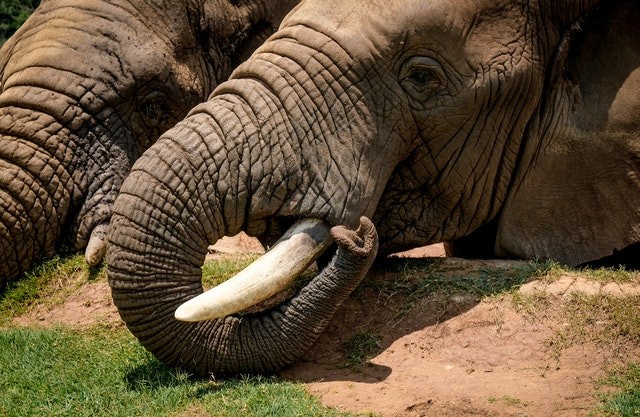Scientists have figured out the physics behind the various ways in which elephants use their trunks to lift objects, eat, and drink, an advance that could aid in building new kinds of robots.

Elephant's Trunk
According to the research released in the Journal of Royal Society Interface, the size of elephant's nostril and their lung capacity makes them capable of using their nearly 100kg trunks to grab objects with "similar pressures as the human lung."
Co-author of the study from Georgia Tech College of Engineering in the US, David Hu, explained in a statement: "An elephant makes use of its trunk like a Swiss Army knife. It can perceive scents and grab things. Other times it blows things away like a leaf blower or sniffs them in just like a vacuum."
In the study, the scientists used techniques like mathematical modelling and ultrasonic imaging to assess the muscles of their trunk at work when elephants feed on various foods like vegetable cubes and tortilla chips.The scientists discovered that while feeding on rutabaga cubes the elephants sucked smaller cubes up, and made a noisy vacuuming sound - like the one a person slurping noodles makes - before moving the vegetables to its mouth.
Also Read : Understanding an Elephant's Playful Side
The Discovery
They then gave elephants a tortilla chip and took a measurement of the suction force. The elephant either pressed down on the chip and breathed it in, or applied suction from afar, taking the chip to the ending of its trunk, according to the scientist. Assessing how the elephants drank water, the researchers discovered that in just 1.5 seconds, the trunk took in 3.7 litres - equal to 20 toilets flushing at the same time.
By contracting the inner muscles of the trunk, the animal widens its nostrils up to 30 per cent, reducing the thickness of the walls and increasing the nasal volume by 64 per cent, they added.
The scientists wrote in the study that based on the pressures applied, they made an estimation that the elephants can inhale at speeds of over 150 m/s, almost 30 times the speed of a human sneeze.

Mechanics and Physics Surrounding Trunk Muscle Movements
The researchers say this speed can be compared to Japan's 480 kmph bullet trains. Leader of the study, Andrew Schulz said in a statement: "It didn't make sense at first: the nasal passage of an elephant is relatively small and it was taking in more water than it should.
Schulz added it wasn't until they viewed the ultrasonographic images and observed the nostrils expand that they realised how the elephants did it.
Air makes the walls open, and the elephant can stockpile far more water than researchers originally estimated. The scientists are convinced that understanding the mechanics and physics surrounding trunk muscle movements (combinations of suction and grasping) - have applications in soft robotics like the type used in rescue operations.
Related Article : Gym Owner Does Pull-Ups on an Elephant's Tusks Gets Viral
For more news, updates about elephants and similar topics don't forget to follow Nature World News!
© 2025 NatureWorldNews.com All rights reserved. Do not reproduce without permission.





